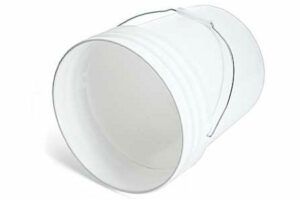We may be compensated if you purchase through links on our website. Our team is committed to delivering honest, objective, and independent reviews on home products and services.
A hypertufa garden trough mimics the charm of old stone troughs but is much lighter and easier to make. In this guide, we’ll walk you through crafting your own hypertufa trough, from mixing the materials to planting your favorite alpine or succulent species. With just a weekend of work, you can produce a unique garden feature that will weather beautifully and provide a perfect home for your plants.
What Is Hypertufa and Why Use It for Garden Troughs?
Hypertufa is a lightweight, porous material that mimics natural tufa rock. It’s made from a mixture of cement, peat moss, and perlite, creating a durable yet breathable container perfect for plants. Gardeners love hypertufa troughs for their many beneficial characteristics:
- Affordable compared to genuine stone troughs
- Customizable in shape and size
- Frost-resistant, withstanding harsh weather conditions
- Lightweight and easy to move
- Porous, allowing for excellent drainage and root aeration
These qualities make hypertufa an ideal medium for creating garden troughs that look like weathered stone but are much more practical for modern gardeners.
Materials and Tools to Make a Hypertufa Trough
Before starting your project, gather all the necessary materials and tools.
Key Ingredients for Hypertufa Mix
Here’s what you’ll need for a basic hypertufa recipe:
- Liquid acrylic fortifier
- Nylon reinforcing fibers
- Peat moss
- Perlite
- Portland cement
- Water
Necessary Tools and Equipment
You’ll also need these tools to create your trough:
- Dust mask
- Garden trowel
- Large mixing tub or wheelbarrow
- Measuring containers
- Plastic wrap
- Release agent (petroleum jelly, plastic sheeting, or paraffin)
- Rubber gloves
- Safety goggles
- Wire brush
- Wooden boards for mold construction
 Hammer
Hammer Paint brush
Paint brush Gloves
Gloves Dust mask
Dust mask Safety goggles
Safety goggles Bucket
Bucket Garden trowel
Garden trowel Wire brush
Wire brush Mallet
Mallet
Preparing Your Workspace and Safety Measures
Safety should be your top priority when working with cement-based materials. Follow these guidelines:
- Always wear a dust mask when handling dry ingredients to avoid inhaling particles.
- Cover your work surface with a tarp or plastic sheeting to protect it from spills.
- Ensure your mixing area is level and stable.
- Keep a bucket of clean water nearby to rinse off any splashes immediately.
- Keep all tools and materials within easy reach to minimize movement and reduce the risk of spills or accidents.
- Set up your workspace in a well-ventilated area, preferably outdoors. Open windows and doors for proper ventilation indoors.
- Wear safety goggles and rubber gloves to protect your eyes and skin from the alkaline cement mixture.
Creating the Mold for Your Hypertufa Trough

The mold determines your trough’s final shape and size. Careful planning at this stage will result in a beautiful, functional planter.
Choosing the Right Mold Materials
You can create molds from various materials:
- Cardboard boxes
- Plywood
- Rigid foam insulation
We like pine shelf board to create a durable, reusable mold. It’s sturdy and can be used multiple times. More robust materials allow for more intricate designs.
Designing and Assembling Your Mold
Follow these steps to create a trough like ours, measuring 17 inches wide by 24 inches long by 10 inches high:
- Cut your chosen material to size and create an outer and inner form.
- Assemble the outer form, securing corners with screws or nails.
- Create the inner form slightly smaller to allow for wall thickness.
- For decorative recesses, glue beveled panels to the inside of the exterior form.
Remember, the walls should be at least 2 1/4 inches thick, and the trough should be at least 7 1/2 inches deep for plant health. This allows adequate space for root growth and moisture retention, promoting healthier plants.
Mixing the Perfect Hypertufa Recipe
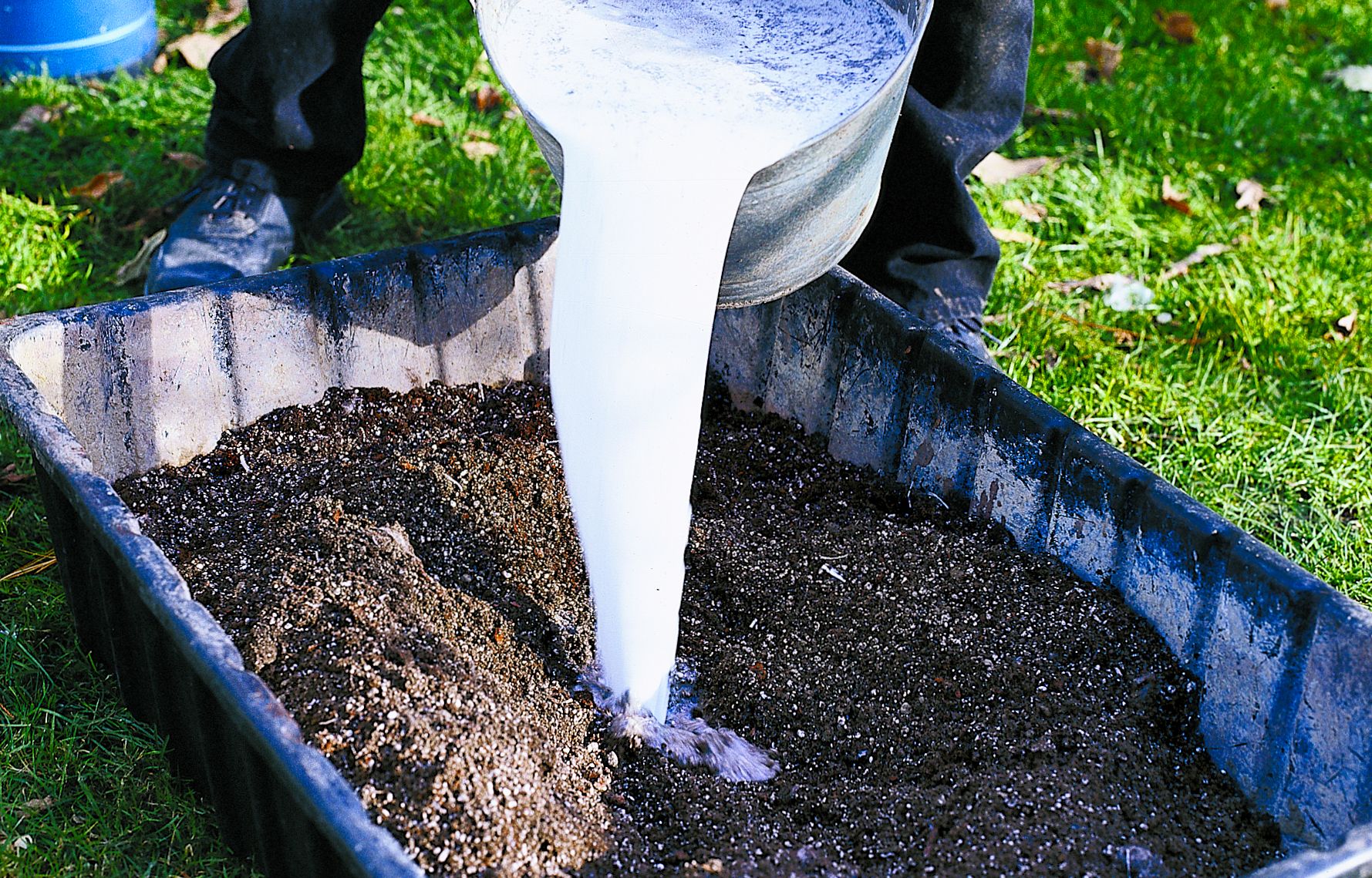
The right mixture is crucial for a strong, durable trough that can withstand the elements. For a standard hypertufa mix, use these proportions:
- 3 parts cement
- 4 parts peat
- 4 parts perlite
- Water sufficient to make a firm, moldable mixture, plus a splash of liquid acrylic (about 1/4 the amount of total liquid)
- A handful of nylon reinforcing fibers
Blend thoroughly before adding water, then adjust the water content until the mixture holds together when squeezed. The reinforcing fibers help prevent cracking and increase the trough’s longevity, so make sure you add enough to mix throughout the hypertufa.
Preparing Your Hypertufa Mold
With your mold and mixture ready, it’s time for final preparations.
Applying a Release Agent
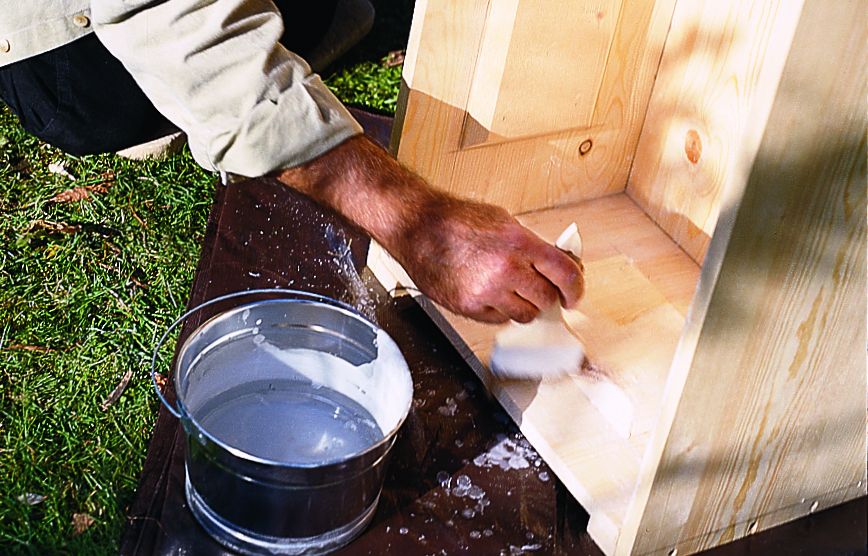
Apply a release agent (we used paraffin) to prevent the hypertufa from sticking to the mold. Coat all surfaces of the mold with the release agent. If using paraffin, brush it on while melted for even coverage.
Adding Drainage
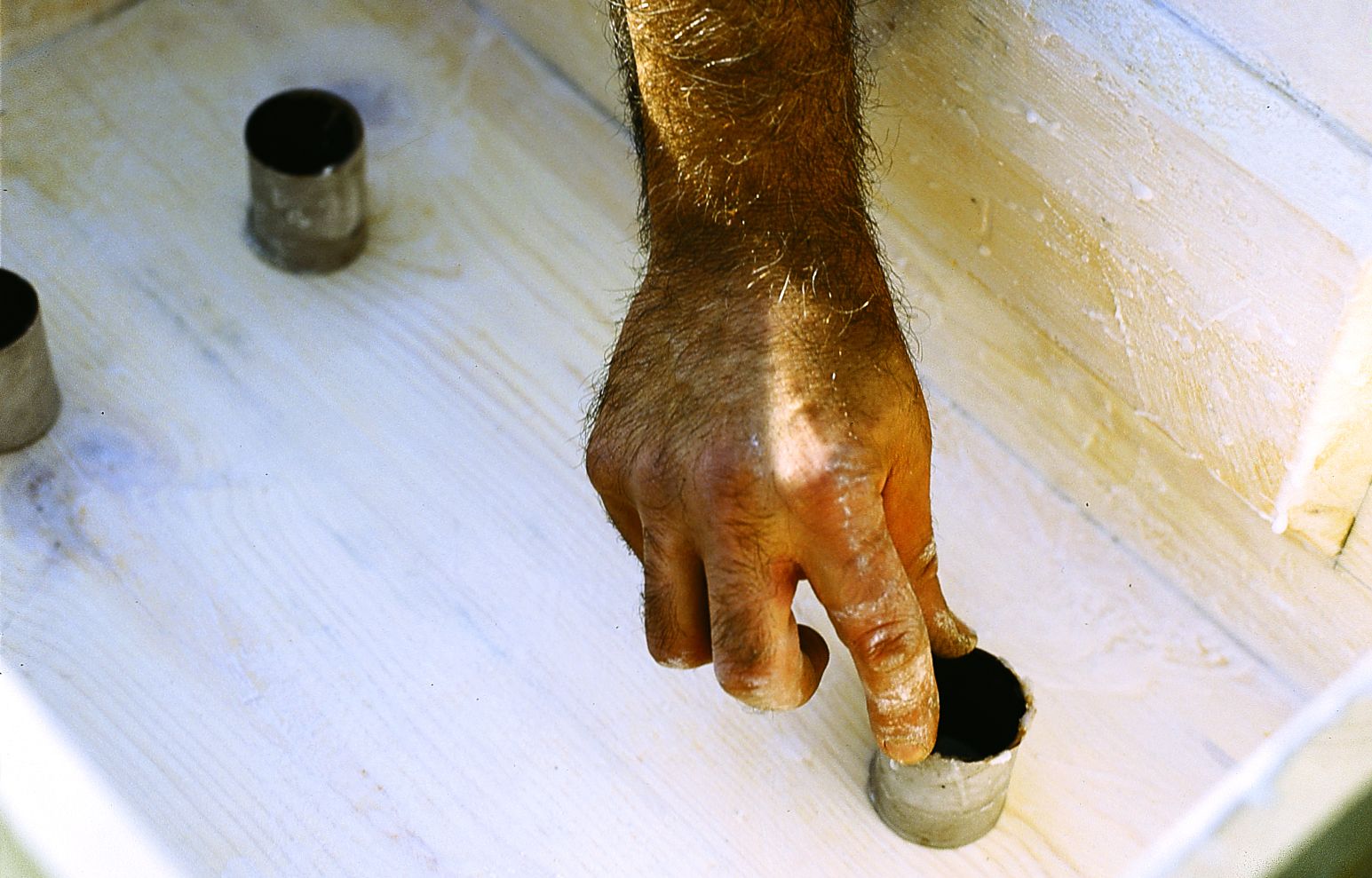
Your planter needs drainage holes to keep your plants healthy. Cut four 2 1/2-inch-tall pieces of paper-towel spool or lengths of PVC pipe and space them evenly toward the corners of the outside form. Use melted paraffin to secure them.
Casting Your Hypertufa Trough
Now it’s time to cast your trough. Work safely and carefully.
Mix Hypertufa
Put on gloves, a dust mask, and goggles, then follow these steps:
- Mix the cement, peat, and perlite in a large tub or trough.
- Add the water and acrylic fortifier a bit at a time, turning the mix thoroughly so it sticks together but is not runny.
- Fluff up the nylon reinforcing fibers and add them to the mix.
You should be able to form the fiber-reinforced mix into a solid ball that doesn’t fall apart.
Pack Hypertufa Into Form
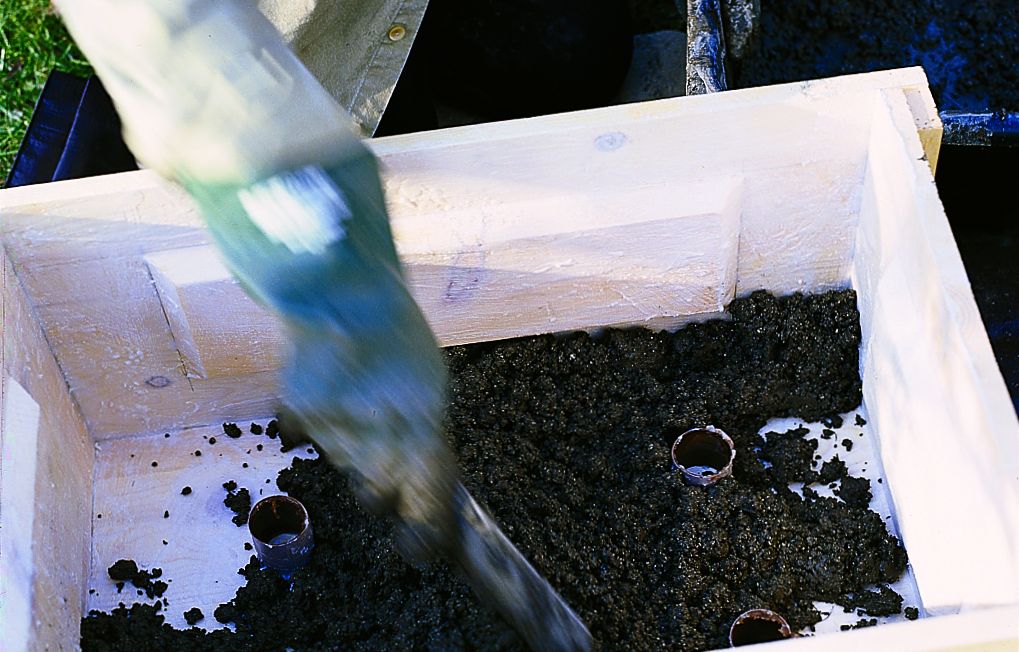
Pack the hypertufa mix into the form, taking care not to knock the drainage molds out of place:
- Start at the bottom of the outer form and pack tightly.
- When you’ve packed the bottom to a thickness of at least 2 1/2 inches, insert the inner form and begin packing tightly up the sides.
We recommend shoveling the mixture in with a garden trowel. Remember, the tighter you pack, the stronger your trough will be.
Tamp Down Hypertufa
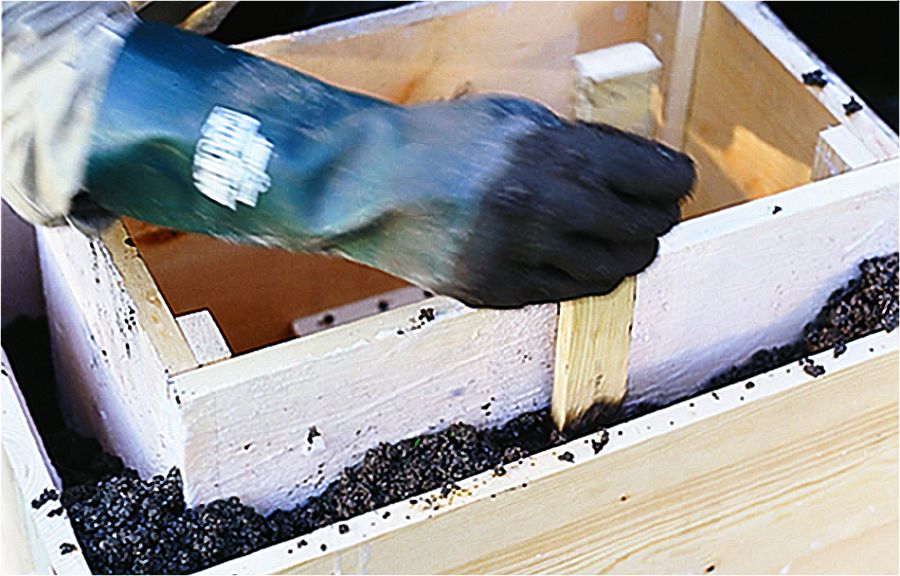
Periodically tamp down the hypertufa with a flat piece of wood to remove any air pockets. Continue adding and tamping until the mixture is flush with the top of the outer box.
Curing and Finishing Your Hypertufa Garden Trough
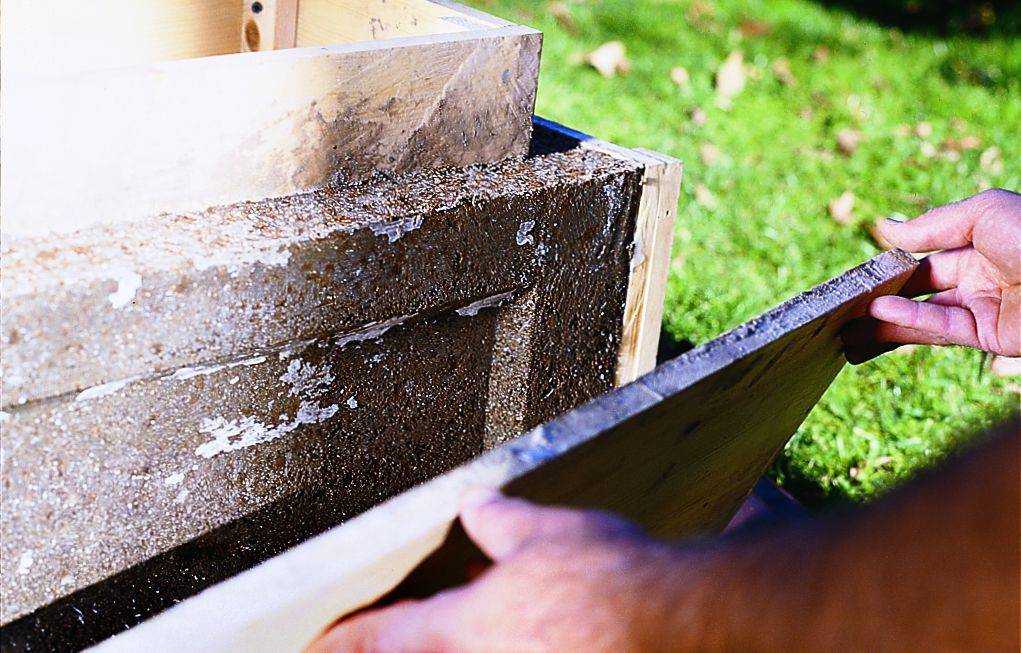
Proper curing makes for a strong, long-lasting trough:
- Let your trough cure for at least 24 hours or until you can’t scratch the surface with a fingernail.
- Remove all fasteners and take off the bottom panel.
- Carefully remove the rest of the outer boards. Use a garden trowel to help pop them off if needed.
- Gently collapse the inner form inward to remove it.
Final Touches and Curing

Add the final touches to your trough once unmolded:
- Texture the surface with a wire brush for a weathered look.
- Soften sharp edges to mimic natural wear.
- Wrap the trough in plastic and cure in a cool place for about four weeks.
This extended curing period ensures maximum strength before planting. Sufficient curing time will contribute to durability and weather resistance, helping your trough be a beautiful garden feature for many years.
Planting and Caring for Your Hypertufa Trough Garden
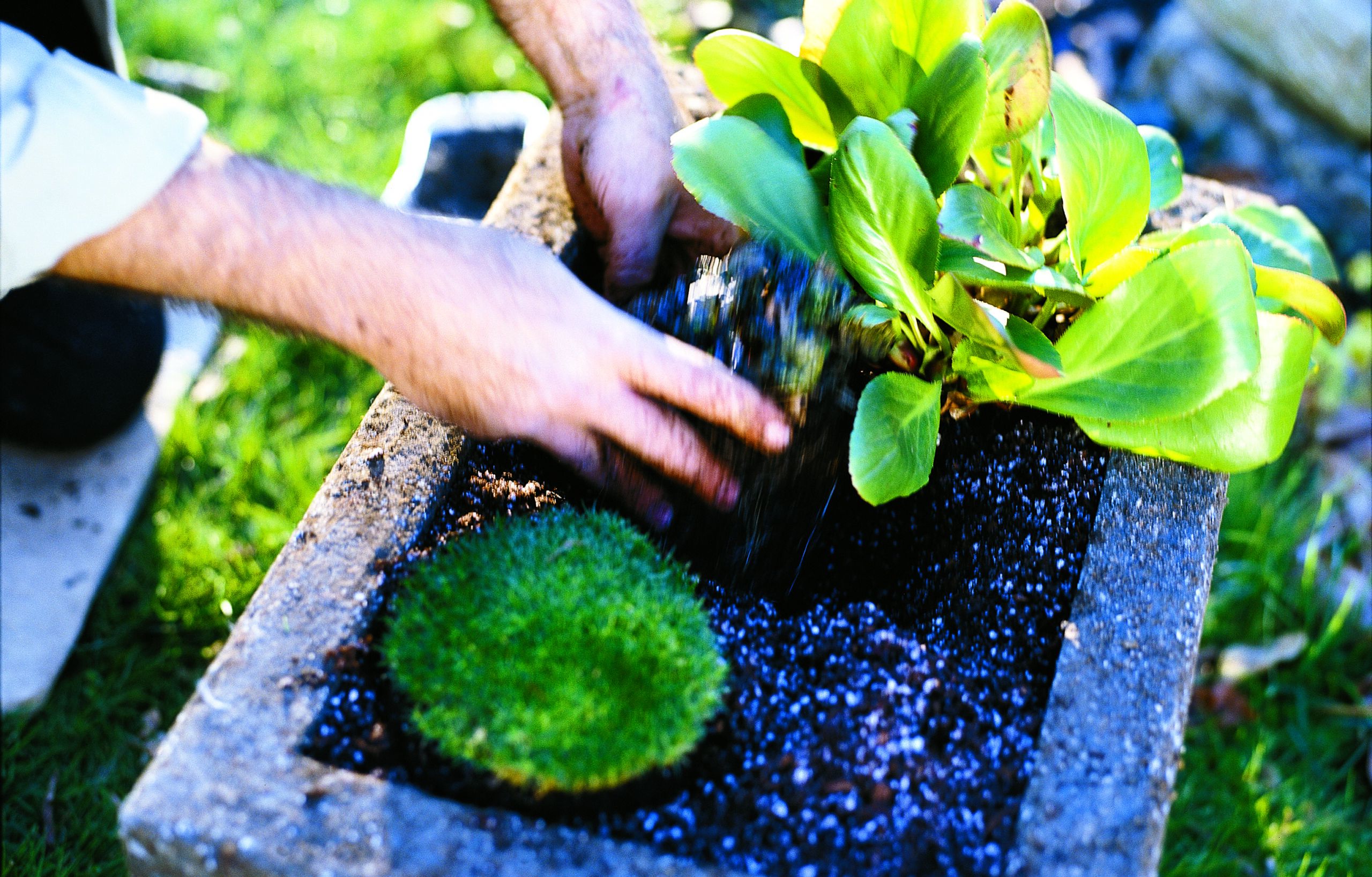
Your cured trough is now ready for planting. Choose plants that suit the unique environment of a hypertufa container.
Selecting Suitable Plants
Certain types of plants thrive in hypertufa:
- Alpine plants
- Dwarf conifers
- Small herbaceous perennials
- Succulents
Consider plants’ scale and growth habits to create a balanced, long-lasting display. Place the trough in a location that suits your chosen plants’ light requirements. Look for plants that thrive in well-draining, porous environments to keep your hypertufa trough healthy and vibrant.
Proper Drainage and Watering Techniques
Though hypertufa’s porous nature allows for a lot of drainage, proper drainage and watering are still important. Follow these tips:
- Cover drainage holes with wire mesh to prevent soil loss.
- Use a well-draining potting mix with added grit or small stones.
- Water carefully, allowing the soil to dry slightly between waterings.
Troubleshooting Common Hypertufa Trough Issues
Even with careful preparation, you might encounter some challenges. Here’s how. toaddress them.
- Algae growth: Normal in damp conditions. Scrub gently or embrace the aged look.
- Cracking: Usually due to rapid drying. Cure slowly in a shaded area.
- Frost damage: Protect troughs in winter by moving to a sheltered spot or covering.
Hypertufa Trough Maintenance
With proper care, your hypertufa trough will become more beautiful with age, developing a patina that enhances its rustic charm. Follow these tips to keep it looking its best:
- Apply a sealer every few years to reduce water absorption.
- Avoid harsh chemical cleaners.
- Brush off debris regularly.
- Embrace the natural aging process, which adds character.
Exploring Hypertufa Design Variations
Experiment with different shapes, sizes, and textures once you master the basic hypertufa trough. This can add an element of personal flair to your garden:
- Enhance your hypertufa with color. Add cement dyes to the mixture for subtle hues, or apply exterior-grade paints after curing.
- Incorporate textured materials for an interesting finish.
- Mix in natural elements such as leaves for imprints.
- Use old containers to cast unique shapes.






